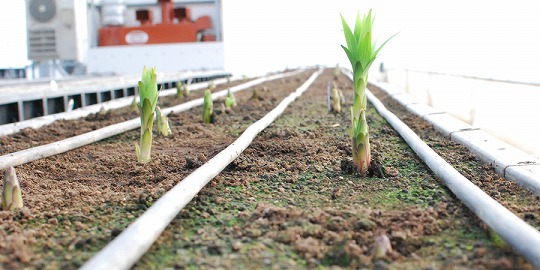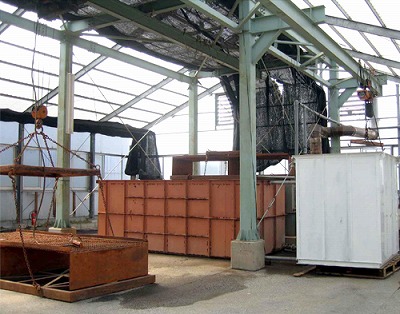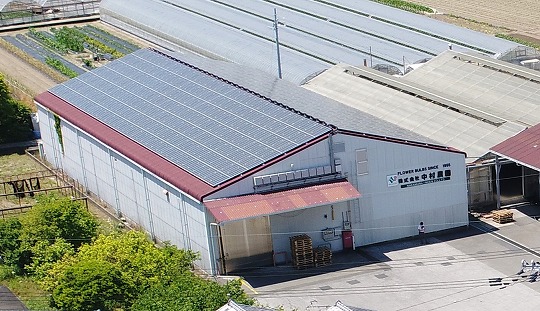Keigo Nakamura
Thank you very much for your usual cooperation.
I have been in Chile & New Zealand in the second half of February, and visited main growers, who export to Japan.
Besides I also report you about situation of sales of SH crop 2009 etc.
●面積と生産体系の変化
●Change of acreage and production method
①.Acreage and varieties
By the hearing of each grower, Acreage of 2009 is as below table.
NZ increased, Chile decreased much, and 8.7% decreased in total.
| 2008 | 2009 | 09/08(%) | |
| New Zealand | 194.5 | 201 | 103.3% |
| Chile | 464 | 400 | 86.2% |
| Total | 658.5 | 601 | 91.3% |
In the last report on February 13th, I wrote “NZ decrease 5%, Chile decrease 15% !?”, but it’s not so decreased in fact.
Varieties quite decreased are Acapulco, Marco Polo, Yelloween, Casa Blanca, Star Gazer, Mero Star,etc. Decreases of those are rather extreme, like all grower stop same variety at same time as sensitive reaction for market information.
Also, those varieties are often not renewed stock, so it will take long time for reproduction. (Maybe, won’t be produced again)
On the other hand, varieties like Robina, Cherbourg, Santander, Corvara, Montezuma, Belladonna looks increasing specially.
As alternative of decreased variety, those varieties have future possibility, so we look forward to your courageous challenge.
Other variety which Japan mainly uses is not big changed.
②.Percentage of acreage of forcable size
Acreage of above mentioned table is total of forcable (crop 09), scaling (including field which will be scaling next year), and first year of 1.5 or 2 years.
According to my checking this time, acreage of forcable of both CH & NZ is about 68%, and rest 32% is for production of next seasons. It’s much higher than production in Holland, which is about 20% (NL crop 2008 OR’s greenhouse and scale was 19.4% in total).
Merit of more acreage of scales is that grower can throw away small planting material and can use only bigger size, then production can be adjustable to any market demand, and possible to produce bigger size mainly.
(I mean decrease of acreage is not always comes decrease of forcable size bulbs)
●Climate of this year
County of Chile and New Zealand is located far from each other beyond Pacific Ocean, but coincidently climate had been similar.
After planting, from October to January was average or little warm and good sun shine. Maybe influence of whether of it, height of lily in field is little shorter. Difference of NZ from Chile is hail in Nov and Jan. Top leaf of certain field got damage but I don’t think it influence for growing.
Southern wind starts in February, and whether changes into autumn like.
Temperature during visit was lower than 20 degrees and rainy, so I put light coat on.
We dag and checked many bulbs of many lot, and we didn’t see specific problem on bulbs. But there is difference between lots, so we think to do selection according to customer’s purpose of use.
We haven’t visit SH in February recent years, so we don’t have comparison though, bulbs enlarge except some bad growing field was more than 2.5 size(5cm) is not bad in this time of year.
We have no idea yet about power contents of crop. Weather in March to May will be important.
“Climate graph of C.C 08-09” is reference.
●Bulb trading is changing
It’s past 1 month after last report on Feb 13th.
In mean time, factor of price setting like on my last report was discussed, and came to general understanding of situation.
One of my purposes of this trip was to meet growers and explain situation of cut flower production side.
During meeting with growers, I told Japanese lily production and actual situation of forcers, which could be effort to fill up gap between growers expectation and buyers reality.
Remarkable change of 09 SH deal is that main exporters (growers) distribute demanded variety to main importers on priority. It forms the line (chain) from production to sales, and it results stable efficient deal. Dutch people call it Structure Business.
In reality, if deal was small, to make one container become hard or efficiency of shipping become low (delay of shipment = shortage of cooling storage space), that can be reason to intensive sales strategy.
(Specially Influence to LA should be big, because harvesting time is different from OR, and amount is still not much (less cases).
Also, as effect of modification, we have more possibility to switch bulbs to other production area or country, in case of shortage by quality problem or less enlargement, which means less percentage of shortage to forcer (stable supply).
Nakamura-Noen is changing in the situation of efficient distribution way, and reducing bulb price and additional cost (cooling and commission), which forcers can feel merit directly.
(Construction of new facility is also direction of“reduce cost and stable quality and supply”, ”improvement of service”. Please come and check during Lily Fest on June 4-6.)
As a result of SH crop 2008, we have deal 41% of Japanese quantity of distribution (analyzed by major Dutch exporter).
Furthermore, We keep growing to supply good bulbs at low cost, and try better service! )
●Bulb price and Flower price
It’s really difficult period, I feel.
For the bulb production side, bulb price of last year was not a loss, but not interesting too.
For Japan side, influence of very cheap flower price in last year was big, so higher bulb price is not nice, and not necessary to buy at higher price.
Quotation of SH crop 2009 come to similar level as last year, and exchange rate helps to manage lower Yen price than last year.
When I had lunch together with one forcer in Kochi, Grower from Chile & NZ, and major export company, that forcer said “As long as we can obtain good bulb, little higher bulb price is acceptable”.
I agree with it. If we don’t care about quality, flower production is not interesting, is it.
If financially bulb grower becomes difficult, bulb quality will be lower.
Then we can’t produce best flower, and also loose satisfaction on your own product.
But of course, it’s not saying that we pay any high price for quality bulbs.
We do try to be the function for “better bulbs by lower cost”, which is our company’s motto.

| Chili | |||
| Sun Harvest | |||
 |
 |
 |
 |
| Sapporo | Siberia | Universe | Rio Blanco |
 |
 |
||
| New warehouse | New warehouse | ||
| ソネ社 | |||
 |
 |
 |
 |
| Advantage | Casa Blanca | Courier | Santander |
 |
 |
 |
 |
| Siberia | Sorbonne | Sorbonne | Brindisi |
 |
 |
 |
 |
| Rialto | Rousillon | Lombardia | checking |
| Southern Bulbs | |||
 |
 |
 |
 |
| Conca D’or | Siberia | Siberia | Sorbonne |
 |
 |
 |
 |
| Sorbonne | Nova Zembla | Nova Zembla | Vespucci |
 |
 |
 |
 |
| Rialto | Robina | talking | checking |
| Montos Verdes | |||
 |
 |
 |
 |
| Willeke Alberti | Corvara | Santander | Santander |
 |
 |
||
| Rialto | checking | ||
| Sun&Breeze Garden | |||
 |
 |
 |
 |
| Conca D’or | Serano | Fairy Tale | Robina |
 |
 |
||
| warehouse | checking | ||
| New Zealand | |||
| Island Bulbs | |||
 |
 |
 |
 |
| Colorado | Conca D’or | Siberia | Siberia |
 |
 |
||
| Sorbonne | Belladonna | ||
| Van Zanten | |||
 |
 |
 |
 |
| Aktiva | Casa Blanca | Couplet | Constanta |
 |
 |
 |
 |
| Sanna | Siberia | Siberia | Justina |
 |
 |
 |
 |
| Tiara | Royal Trinity | Viviana | Rialto |
| Bakker | |||
 |
 |
 |
 |
| Caruso | Siberia | Sorbonne | Rialto |
 |
 |
||
| Le Reve | Robina |
| Southern Flora | |||
 |
 |
 |
 |
| Akemi | Sorbonne | Tropic Diamond | Party Diamond |
 |
 |
||
| Party Diamond | Rialto |
































